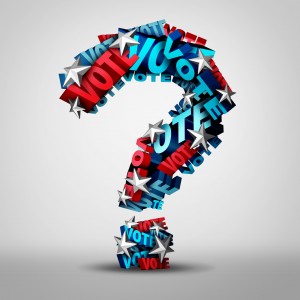 Dec. 19, the Electoral College chose Donald Trump as the next president. How did Sec. Clinton go from prohibitive favorite to runner-up? Here’s my summary of six weeks of coverage.
Dec. 19, the Electoral College chose Donald Trump as the next president. How did Sec. Clinton go from prohibitive favorite to runner-up? Here’s my summary of six weeks of coverage.
The national polls weren’t that far off
Clinton’s lead in the popular vote stands at nearly 3 million votes, or 2.1 percent, only 1.1 percent off of the RealClearPolitics.com average of 3.2 percent. That’s a smaller difference than the polls underestimated President Obama in 2012. The problem was the vote distribution – Clinton ran up the margins in blue states, and lost narrowly in the Midwest.
State polls were all over the place
It’s not entirely clear whether Trump voters were unwilling to admit their preference, missed by likely voter screens, or unresponsive to “mainstream media” polls. Whatever the reason, almost everyone had the Rust Belt wrong except Ann Selzer, who was laughed at for showing Trump winning Iowa by seven points. He won by almost 10. Even the Trump campaign thought they were losing on Election Day, but he surged in the “exurbs,” areas considered outside the suburbs but not quite rural. Meanwhile, Clinton was beating her polls in less competitive states.
Early exit polls were, once again, a bust
They showed Clinton ahead in Florida, and surprisingly competitive in Iowa and Ohio. It didn’t turn out that way.
Change mattered more where it counted
Based on exit polls, people who viewed Trump unfavorably (61 percent), not honest and trustworthy (65 percent), not qualified for office (only 37 percent said he was), and without the personality and temperament for the job (only 34 percent said he had them) voted for him anyway. 38 percent of voters said that “someone who can bring about change” was their most important issue, and Trump won them handily.
Some voters couldn’t be sold on Clinton
Hillary Clinton has been battered by conservatives, and sometimes the press, since she tried to lead health care reform in the 1990s. Some of the attacks were fair, but most were conspiratorial or misogynistic. Unfortunately, unfair doesn’t mean ineffective. Clinton could never escape that negativity during campaigns, though it notably dissolves when she gets a job and does it well. Some voters who backed Obama twice didn’t support her. Nor did the “Obama coalition” show up, at least in the right places. The urban centers that helped Obama carry Wisconsin (Milwaukee County) and Michigan (Wayne County) didn’t give Clinton the cushion she needed to offset Trump’s gains in the exurbs.
Americans wouldn’t take their medicine
Sec. Clinton and her team decided to make the campaign about Trump being unfit for the presidency. In a sense, she was billed as the medication we needed to prevent bad things from happening. Whether it was due to Obamacare issues or FBI Director Comey, late deciding voters rolled the dice on Trump rather than take a medicine that didn’t smell good to them.
We’ll know in 2018 whether they wish they’d finished their prescription.












Everything the Democrats did backfired, why?
Well because Clinton had so much baggage she could not overcome it.
The DNC’s internal polls (leaked) showed Clinton was in serious trouble from the start. Who wants a President who got a man who raped a little girl sent scott free.. Who wanted a president who out of one side of her mouth was spouting women’s rights, LGBT rights and taking money from Saudi Arabia, a country where livestock are treated better than women, and where gays are executed?
You can’t be serious with all your rationalizations of what went wrong.
Nobody in their right mind would want her in office, not after all this and threatening the Russians with war over a phony hacking accusation.
The emails were leaked by a DNC insider, http://www.foxnews.com/politics/2016/08/10/assange-implies-murdered-dnc-staffer-was-wikileaks-source.html
I’ll say it again, things turned out the way they did because the Democrats got lazy and backed the wrong candidate. Sanders would have been a much better choice and there were Republicans who were ready to cross over to support him.
Liz